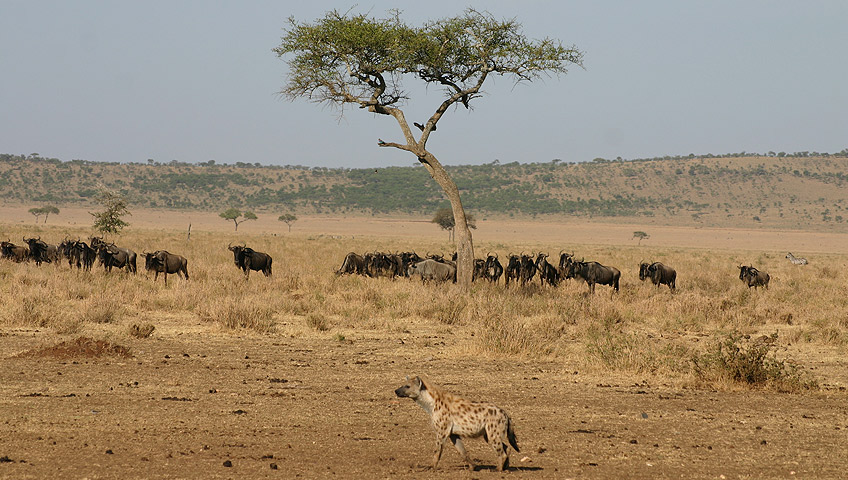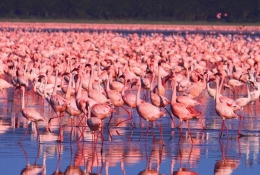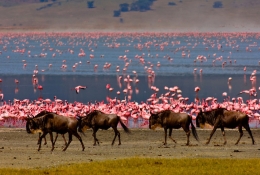
Masai Mara National Park
The 1’510km2 reserve ranges between 1’500m and 2’100m above sea level. The reserve receives high rainfall as a result of the altitude and humidity of nearby Lake Victoria, 160 km west. It lies 275 km southwest of Nairobi, and the journey takes five hour by road. It is an extension of Tanzania’s Serengeti National Park, a small part of the Serengeti ecosystem covering some 40’000km2 between the Rift Valley and Lake Victoria.
Attractions:
It is the most popular of Kenya’s parks, with very good reason. One of the unique, spectacular and most memorable sights is the annual migration of hundreds of thousands of wildebeests (estimated at 500’000 animals), gazelles and zebras as they move from the Serengeti Plains in January, having exhausted the grazing there, on their way northwards, arriving in the Masai Mara by about July — August. Among the rare antelopes found here are the Roan antelopes in the southwest sector, and the thousands of topi only found here and in the Tsavo National Park. Another shy mammal is the bat — eared fox sometimes seen peering out of their burrows.
Besides the wildebeests, the reserve is teeming with other herbivores — numbering around 2’500’000 including Thompson’s and Grant’s gazelles, zebras, buffalos, impalas, topi, hartebeests, giraffes, elands, elephants, dik — diks, klipspringers, steinboks, hippopotamuses, rhinoceroses, warthogs and bushpigs. There are also large numbers of lions, leopards, cheetahs, hyenas, wild dogs and jackals, as well as smaller mammals and reptiles. In the Mara River, hippopotamuses and apparently sleepy crocodiles can be seen. In addition to the numerous mammals, over 450 species of birds have been recorded, including 57 species of birds of prey.
Visits to the Masai manyatta (homes) are on offer as well as game drives.
How to get there:
Air: There are a number of daily flights, including return flights from Wilson Airport in Nairobi which usually take about 45 minutes. There are also daily flights from Mombasa which usually take 2 hours
Road: The main access to the Mara Reserve is through Narok town, 141km to the west of Nairobi, and the last stop for buying food, water and petrol. The journey to the Masai Mara is fascinating in itself, crossing through the Rift Valley over dry range lands. From Narok to the park is 100km, part of which is along unsurfaced roads. The other route is from Kisii, the road to the park being just about okay in a 4WD outside of the rainy season.










